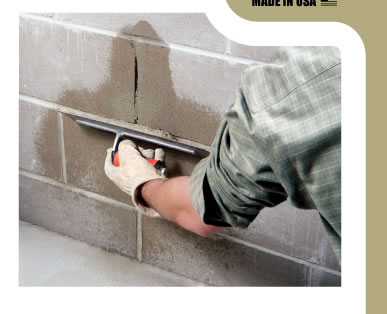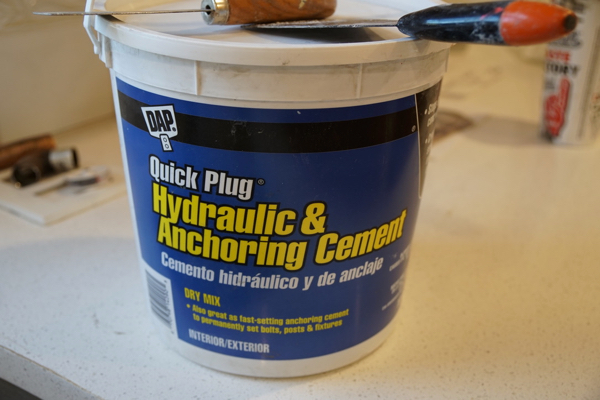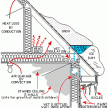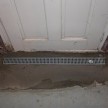Using Hydraulic Cement to Fix Basement Leaks
Using Hydraulic Cement

Many times people will ask me what to do about puddles or small leaks in their basement foundation wall.
Often times the leak is outside rain water that seeps of “flows” through holes drilled in the foundation wall for electrical conduit, water lines or a sewer pipe. The simplest solution is to use hydraulic cement to fix basement leaks and seal around the pipes.
Basement Leak Fix
Hydraulic cement is a rapid setting, high strength repair material designed to plug leaks instantly in concrete and masonry. Once mixed it sets in 3-5 minutes and can be used above and below grade.
Hydraulic cement is designed to block running water or leaks in cracked masonry or concrete surfaces. Hydraulic cement is a non-corrosive, non-rusting and non-shrink material. Applying the hydraulic cement on both sides of the wall is preferred but not always feasible.
Using Hydraulic cement:
Surface Prep:
All surfaces in contact with hydraulic cement should be free of dirt, debris, oil or grease. For best results undercut the area with a cold chisel. Small cracks should be enlarged to maximize bonding area. The area to be repaired must be saturated with water before placement.
If possible, remove any standing water prior to repair.
Mixing:
For best results, add hydraulic cement to clean, potable water in a small mixing can. Mix only as much as you’ll use. Mix to a stiff consistency and mix only enough material that can be placed immediately.
Placing:
For general repairs, press material into the area to be repaired by gloved hand or with a trowel.
Fill to the full depth and trowel to final level without overworking the material. To stop running water, mold material by gloved hand into a ball or wedge shape and hold hydraulic cement in gloved hand or on a trowel until material becomes warm.
Press firmly into opening and maintain pressure on the patch until material stops the leak or approximately 3-5 minutes.
Trowel material into final shape without damaging plug.
Sealing Cracks
For sealing cracks in walls or floors, force Hydraulic Cement into the crack by starting at the area with the least amount of pressure. Hold into place and maintain pressure until the material has hardened.
Not For Structural Repairs
Hydraulic cement will not permanently repair cracks and joints subjected to thermal or structural movement.










